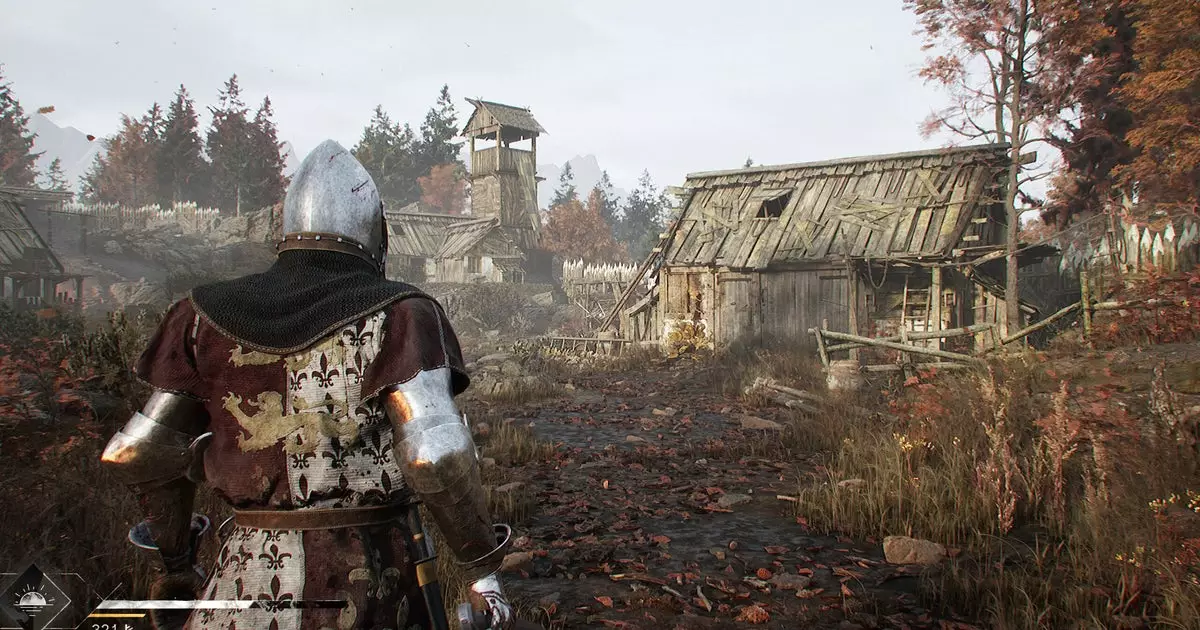In the twilight landscape of indie horror gaming, Blight: Survival emerges like a grotesque flower in the muck. Developed by Haenir, this action-horror game has garnered attention through its eerie setting, steeped in the malaise of two warring kingdoms. As players venture into this foreboding realm, they are met with the dire consequences of conflict—an environment ravaged by violence that has birthed an army of grotesque undead. The initial conception of the game by a mere duo hints at the raw passion fueling its creation—yet, it leaves one pondering how such a small team can execute a vision that demands vast resources and creative talent.
The nerve-wracking tension present in *Blight: Survival* stems from a rich tapestry of elements, from its haunting aesthetics to its contentious gameplay mechanics. The game has recently announced new biomes and enemy types, indicating that development is in motion, albeit progressing slowly. Despite enthusiastic anticipation from its growing fan base, the question remains: can the developers innovate effectively before the inevitable release?
The Struggles of Combat
At the core of *Blight: Survival* lies the promise of directional combat, a system brimming with potential but fraught with pitfalls. In an age where many games flounder under the weight of poorly executed melee mechanics, Haenir’s ambition to introduce nuanced fights may either elevate the experience or sink into mediocrity. Successful combat systems, like those in *For Honor* or *Kingdom Come: Deliverance*, draw players into visceral engagements. However, the risk of falling into the trap of a gimmick is ever-present, and expectations will be skewed by players craving a truly immersive experience that engages not just their thumbs but their psyche.
While the premise of *Blight: Survival* revels in bloodshed—fighting hordes of corrupted beings with an arsenal of weaponry—one must wonder how much depth this chaos can provide to blanket the underlying sameness that often plagues games in this genre. Will it be merely an exercise in slash-and-hack, or can it transcend to offer tactical brilliance with an engaging storytelling arc?
The Swamp Aesthetic: A Love-Hate Relationship
Interspersed among the game’s bloody misadventures lie some strikingly grim environments. The wetlands serve as a character in themselves, laden with the detritus of past conflicts—a scenery that echoes titles like *A Plague Tale: Innocence*, *Hunt: Showdown*, and *Dark Souls*. This swampy underworld is not just a backdrop but an immersive landscape where players tread perilously through muck and despair, presenting a tantalizing, albeit dangerous, visual feast.
In an age dominated by clean aesthetics, *Blight: Survival’s* artistic decision to plunge into the muddy and malodorous reflects a bold risk. While it’s likely to alienate casual gamers deterred by its unrelenting grimness, for those craving authenticity, it provides a raw window into an off-kilter reality. A swamp, by nature, dares players to explore its depths, challenging them to confront their fears and desires while skimming the surface of fear and dread.
Anticipating the Unknown
With Haenir ramping up production thanks to the infusion of talent from Behavior Interactive, the stakes are high. Enthusiasm brims as team dynamics morph with an influx of resources—yet the shadow of corporate strain looms large. The recent wave of layoffs within gaming studios raises questions about the sustainability of such projects. Can a team that once toiled away in relative obscurity now thrive under the scrutiny of broader expectations?
The ongoing closed playtests harbor a bombardment of questions: Will they unveil hidden magic in gameplay? Will the new developers retain the essence that attracted players to *Blight* initially? What will happen when newcomers merge their visions with that of the original duo? As players anxiously await announcements from the *Steam* page, all eyes are on the morass of development, where hope mingles with trepidation.
Ultimately, *Blight: Survival* is more than just another entry into action-horror; it’s a glimpse into a kaleidoscopic nightmare filled with potential and peril. Gamers, transfixed by the allure of what lies beneath, can’t help but feel the pulse of gaming speculation in the air—as they wonder if this game will rise proudly from the swamp or sputter and sink into the dark depths of mediocrity.

